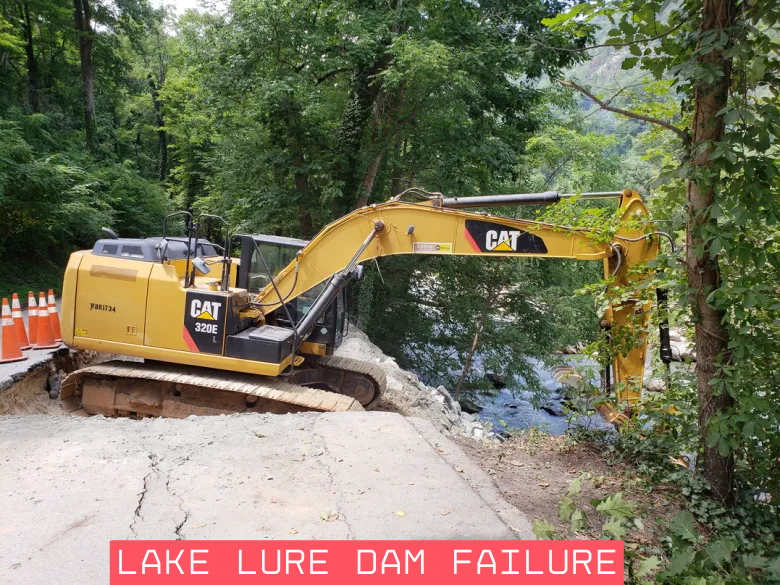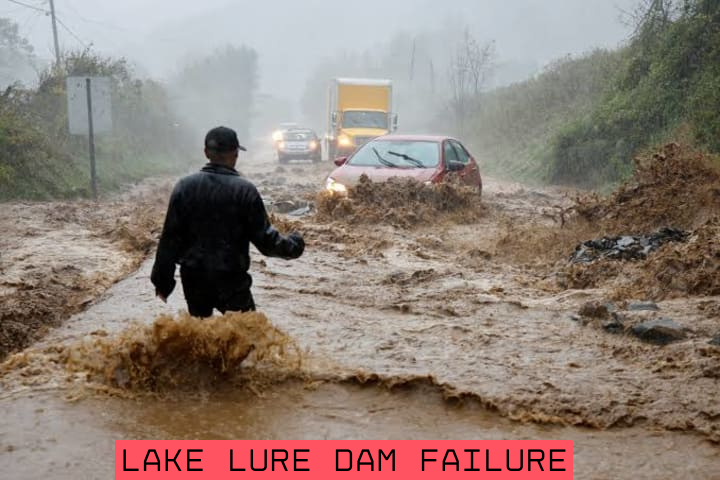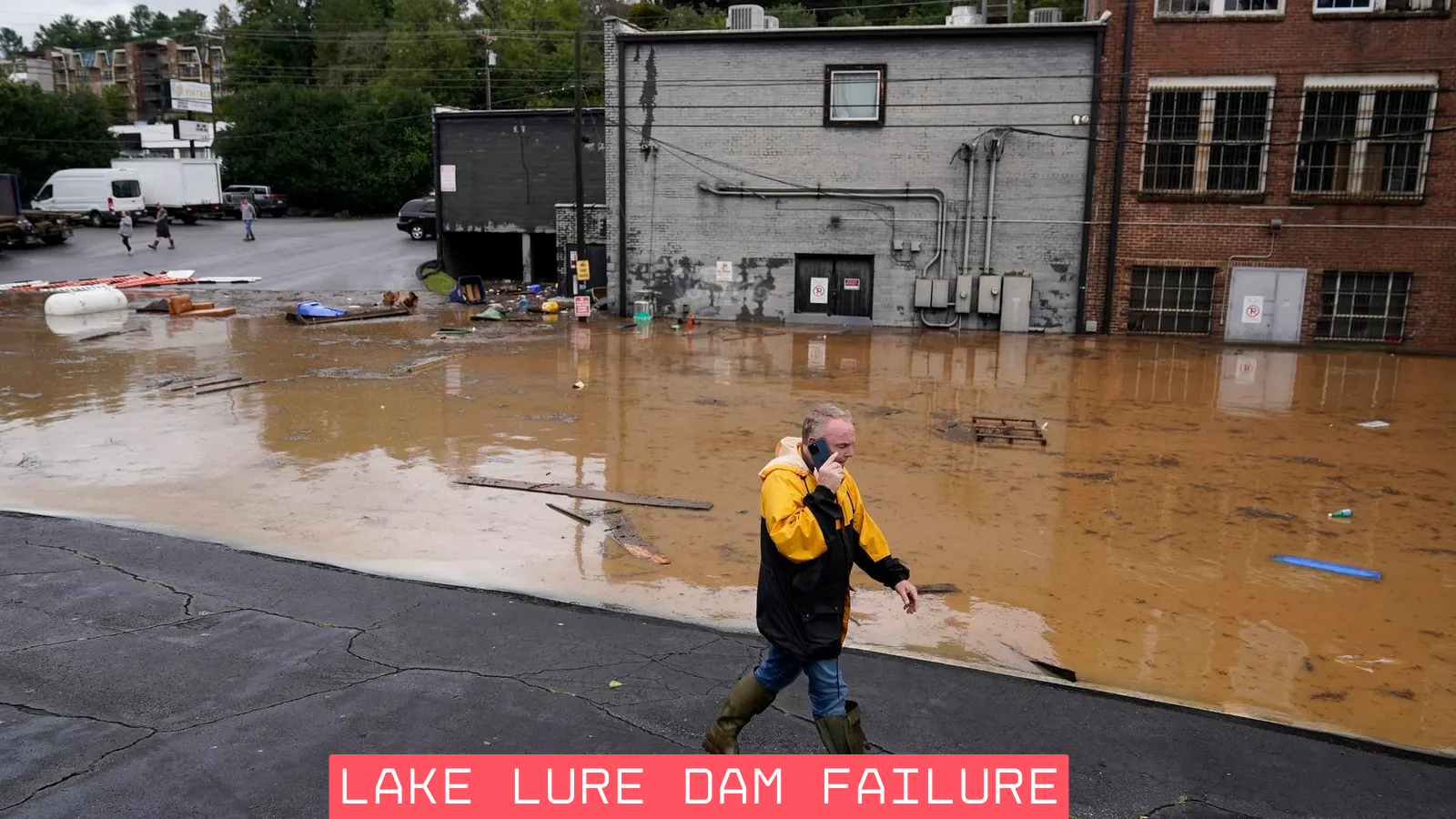The Lake Lure Dam, located in the picturesque town of Lake Lure in western North Carolina, has recently garnered attention due to concerns over its stability following severe weather conditions. As a high-hazard dam, its potential failure could have significant consequences for the surrounding area. This article provides an in-depth analysis of the Lake Lure Dam failure, examining the events that led to the crisis, the efforts made to prevent disaster, and the ongoing restoration plans.
Introduction: Understanding the Lake Lure Dam’s Importance
The Lake Lure Dam failure is a crucial infrastructure piece located on the Broad River in Rutherford County, North Carolina. Serving as a hydroelectric dam, it stands at 124 feet tall and stretches 480 feet in length. The dam has a storage capacity of approximately 44,914 acre-feet of water, which is equivalent to the volume of 22,500 Olympic swimming pools. Given its size and importance, any concerns regarding its integrity are a matter of serious concern for the town and the surrounding area.
The Early Warning: Hurricane Helene’s Impact on Lake Lure
The crisis surrounding the Lake Lure Dam began when the remnants of Hurricane Helene brought heavy rains to the region. The extreme weather conditions led to excessive rainfall, resulting in water overtopping the dam. By Friday morning, emergency warnings were issued, urging residents downstream of the dam to evacuate immediately.
Emergency Alerts and Evacuations
On the morning of the dam crisis, the Rutherford County Emergency Management Department issued a public warning that dam failure was imminent. “Residents below the Lake Lure Dam need to evacuate to higher ground immediately,” the department posted on Facebook. At the same time, officials reported that water was overtopping the dam, creating a significant concern for public safety.
Despite these dire warnings, residents were reassured later that day when a structural engineer assessed the dam and found it to be in stable condition, though some damage had occurred. However, the situation remained tense, as floodwaters continued to affect the region.

The Role of Structural Engineers in Assessing the Dam’s Stability
A team of structural engineers was dispatched to assess the dam’s integrity. Their role was to determine the level of damage and whether the dam was at risk of lake lure dam failure. The engineers reported that, despite earlier concerns, the dam’s structural supports were holding up, and there was no immediate danger of failure. However, they did note that erosion had occurred on one side of the dam, which could compromise its long-term stability if not addressed.
The Efforts to Prevent a Dam Failure
Following the assessments, emergency personnel worked diligently to manage the situation and prevent a disaster. The dam had lost power earlier in the day, but crews were able to restore electricity and manually operate the floodgates. Despite the challenges, the town of Lake Lure, local authorities, and the structural engineers collaborated to ensure the safety of residents.
Floodgate Operations
The primary method for managing water levels during a dam crisis is the operation of floodgates. Floodgates allow excess water to be released safely from the dam to prevent the structure from being overwhelmed. In the case of the Lake Lure Dam, the floodgates were manually operated after the power loss, allowing engineers to control the flow of water.
Here’s a suggested bio table for the Lake Lure Dam failure article. This table can be placed at the start of the article to provide quick facts and figures about the incident:
| Category | Details |
|---|---|
| Location | Lake Lure, Western North Carolina, USA |
| Dam Name | Lake Lure Dam |
| Dam Type | Hydroelectric Dam |
| Dam Height | 124 feet (37.8 meters) |
| Dam Length | 480 feet (146 meters) |
| Dam Capacity | 44,914 acre-feet (roughly equivalent to 22,500 Olympic swimming pools) |
| Primary River | Broad River |
| Initial Warning | Urgent evacuation notice issued at 11 a.m. ET, Friday, September 29, 2023 |
| Structural Damage | Erosion and loss of power reported |
| Emergency Measures | Power restored, floodgates operated manually, evacuations ordered |
| Affected Area | Lake Lure, Rutherford County, North Carolina |
| Flooded Areas | Sections around Lake Lure and areas downstream on Broad River |
| Cause of Concern | Overtopping of the dam due to extreme rainfall from Hurricane Helene |
| Evacuations | Mandatory evacuation of residents below the dam |
| Critical Updates | Engineer assessments declared dam “in stable condition” on Friday evening |
| Estimated Rainfall | 8-16 inches in the Lake Lure area over the course of several days |
| Dam Classification | High-hazard dam (failure would likely cause loss of life) |
| Recent Work on Dam | Replacement plans and FEMA grants for rehabilitation received |
| Past Inspection | Dam rated in “fair” condition during a March 2023 inspection |
| Nearby Dam Issues | Walters Dam in Tennessee also experienced concerns, but no breach occurred |
| National Dam Status | Over 92,000 dams in the U.S.; many are aging and need costly restoration |
This bio table provides readers with quick reference points on the Lake Lure dam failure incident and gives an overview of the situation’s key aspects.
The Challenges of Reaching the Affected Area
As the dam crisis unfolded, the area surrounding Lake Lure became difficult to access due to downed trees, fallen power lines, and other hazards. The lack of cell service further complicated communication and evacuation efforts. Although emergency personnel worked tirelessly to ensure that residents were safely evacuated, returning to their homes in the aftermath of the storm proved to be a challenge.
Damaged Infrastructure and Evacuation Delays
The damage to local infrastructure, combined with ongoing flooding, made it difficult for many residents to return home immediately. As of the Friday evening update, officials stated that evacuees might not be able to return due to the hazardous conditions and ongoing recovery efforts.
How the Lake Lure Dam Compares to Other Dams in the U.S.
The Lake Lure Dam is one of over 92,000 dams across the United States, many of which are aging and in need of costly repairs. Dams like the Lake Lure Dam, which are categorized as “high-hazard,” are particularly vulnerable, as their failure could lead to significant loss of life and property damage. The Lake Lure Dam was categorized as being in “fair” condition following a 2023 inspection, and concerns regarding its stability had been raised before the recent events.

Aging Dams and the Need for Restoration
Across the country, the aging infrastructure of dams has become a growing concern. Many dams were built decades ago and were not designed to withstand the increased rainfall and climate events of today. As climate change intensifies, the risks associated with aging dams increase, highlighting the need for restoration and modernization efforts.
The Role of the Federal Government in Dam Restoration
To address these concerns, the federal government has been working to provide funding for the rehabilitation of high-hazard dams like the Lake Lure Dam. In 2022, the town of Lake Lure received $16.5 million from the state of North Carolina to assist with dam repairs. The town had also applied for several grants from the Federal Emergency Management Agency (FEMA) to help fund efforts to replace or restore the aging dam.
FEMA Grants and State Funding
FEMA and state agencies have been instrumental in supporting the rehabilitation of dams in North Carolina. In 2023, the town received at least four grants aimed at helping to replace or restore the Lake Lure Dam. The funding is essential for ensuring the continued safety and functionality of the dam.
The Effects of Extreme Weather on Dam Integrity
As the Lake Lure Dam’s crisis demonstrated, extreme weather events can significantly affect dam integrity. In the days leading up to the crisis. The region experienced rainfall. That. Was. Described. As a once-in-a-thousand-years event. This was. Followed by. The remnants of Hurricane Helene, which brought additional rain and exacerbated the situation.
Record-Breaking Rainfall in the Region
According to meteorologists, the Lake Lure region experienced 8 to 16 inches of rain over a three-day period. Such intense rainfall can overwhelm dams, especially those that are already in a state of disrepair. The combination of heavy rains and the aging infrastructure of the Lake Lure Dam made it more susceptible to damage.
The Importance of Emergency Preparedness
The Lake Lure Dam crisis underscores the importance of emergency preparedness for both local authorities and residents. In the case of a dam failure, swift action and effective evacuation plans are crucial in minimizing loss of life and property damage.
Community Awareness and Evacuation Protocols
The town of Lake Lure, along with emergency management agencies. Had established evacuation. Protocols to ensure residents. Could be safely. Removed from the danger zone. Despite the challenges posed by the extreme weather, these protocols were effective in evacuating residents before the situation could escalate.
Conclusion: A Wake-Up Call for Dam Safety
The events surrounding the. Lake Lure Dam serve as a wake-up call for. The urgent need to address the safety and stability of aging dams across the United States. As extreme weather events become more frequent and intense, the risks posed by these dams will only increase. It is essential for federal. State, and local governments to continue investing in dam restoration and modernization to ensure the safety of communities downstream.
Looking Ahead: Restoring the Lake Lure Dam
In the wake of the crisis. The town of. Lake Lure. Is. Focused. On rebuilding and restoring the dam. With the support of. FEMA grants. State funding, and ongoing efforts from engineers and local authorities. The town hopes. To prevent future incidents and ensure. That the dam remains a reliable part of the community’s infrastructure for years to come.
FAQs About the Lake Lure Dam Failure
What caused the Lake Lure Dam failure?
The failure concerns stemmed from the heavy rains caused by Hurricane Helene and the already-aging infrastructure of the dam.
How many people were evacuated from Lake Lure?
Thousands. Of residents. Were. Evacuated. Due. To the risk of dam failure and flooding.
What is being done to restore the Lake Lure Dam?
The town has received state and federal grants to help with the restoration of the dam, which includes infrastructure upgrades and modernization efforts.
What is a “high-hazard” dam?
A “high-hazard” dam is one that, if it fails, is likely to cause significant loss of life and property damage.
Can extreme weather cause dam failure?
Yes, extreme weather, such as heavy rainfall and flooding, can increase the risk of dam failure, especially if the dam is aging or already compromised.


















Got a Questions?
Find us on Socials or Contact us and we’ll get back to you as soon as possible.